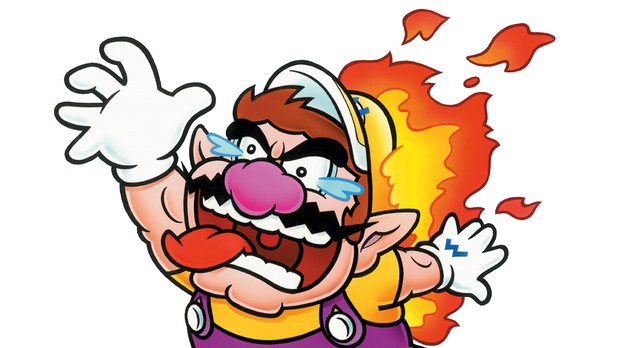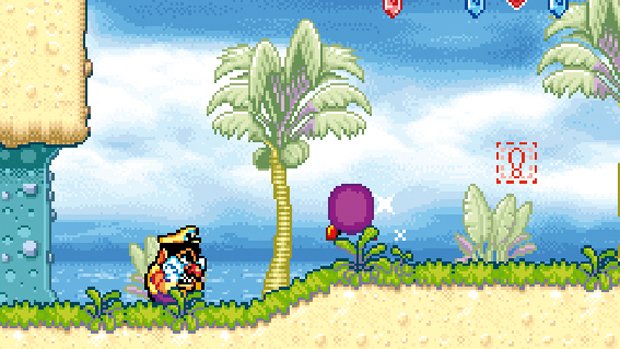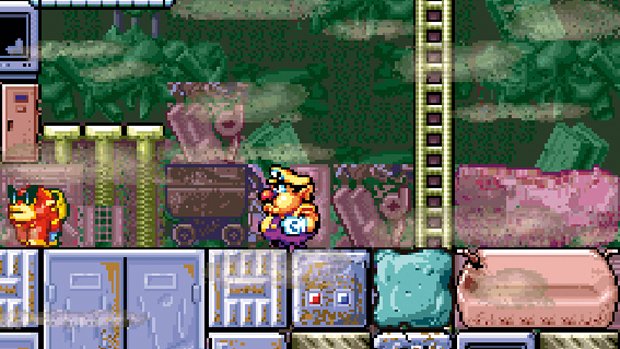There's far more to Wario than being Mario's fatter arch nemesis
You can trace Wario’s roots back to 1989’s Super Mario Land. No, not the sequel in which he made his debut, but Gunpei Yokoi’s original, which took Nintendo’s beloved mascot well outside his comfort zone to a world of sphinxes and submarines, aliens and Moai statues. Yokoi’s team at Nintendo Research and Development 1 may have been given the responsibility of handling Mario’s transition from home consoles to handhelds for the first time, but within the group it was apparently considered more of a burden than an honour. Mario, after all, was not their baby, hence the desire to treat him as an interloper. The sequel allowed them to remedy that creative tension, at least in part, by making a new character. Wario – his name formed by combining Mario’s name with the Japanese word for bad, warui – became not only the villain of the piece, but a symbol of R&D1’s situation, a representation of the team’s outsider status.

Wario was a character that offered something darker, something weirder than Nintendo fans were accustomed to: not so much Mario’s polar opposite, but a caricatured version of the plumber, his features exaggerated to grotesque extremes. He was both fatter and more muscular than his rival, with sharper ears and a more angular moustache. Here was an anti-Mario with edge – and with edges – an altogether less friendly, rounded package in sprite form.
Too good a character to remain the villain, he was retooled into an anti-hero, motivated by avarice, rather than altruism. His debut as lead protagonist in 1994’s Wario Land: Super Mario Land 3 established a template that was subsequently refined and developed over three games, though it was his fourth outing where R&D1 really mastered the formula. It begins with Wario learning of the existence of a golden pyramid that holds a legendary treasure and promptly setting off to retrieve it. While greed is, as ever, his goal, he ends up an accidental hero, inadvertently rescuing a princess in a delightfully off-kilter spin on Nintendo tradition.

A clumsier lead than his nemesis, his special abilities are gained through mishaps. It might fly in the face of game design convention to have enemies deliberately hit you, but then Wario was made to flout the rules. All these powers have debilitating side-effects: if an undead enemy touches him, for example, he’ll turn into a zombie, though he can kill foes by bumping into them. Poison arrows and bee-stings, meanwhile, prompt an allergic reaction that sees his face inflate, enabling him to float to new heights.
These forms introduce a pleasurably light puzzle element to exploration, but the real joy is in the sprite art and animation. You would never call it an attractive game, but there’s mountains of character in these freakish fiends. Hit the first boss, a sentient aubergine trailing a creepy doll behind it, enough times and it reveals a crooked maw of jagged teeth. And the boss waiting in the pyramid’s Sapphire passage, Catbat, is genuinely horrifying. Again, there’s an edge that’s lacking in Mario’s games, evident in everything from the noir-tinged intro sequence to the scratchy voice samples and the vocals on the soundtrack. Wario might be a bit of an outsider, but it’s a reminder that he’s always been cooler than his clean cut, helium-larynxed labelmate.

If Wario Land 4 defies the Nintendo norm, however, it still lives up to the design standards of its publisher. Levels aren’t obstacle courses, but networks of rooms hiding swag and other secrets and are held up to the usual standards, building upon single ideas as they progress. Reaching goals is simple, but mining a level for every secret is a meatier challenge. Only by collecting all four jewel pieces within a passage’s stages will you gain access to the boss and you’ll need to locate a key to unlock the next level. There are also plenty of jewels to boost your score and a hidden CD that enables you to listen to the game’s music in the sound test room.
The sting in the tail, of course, is that you need to hit the Frog Switch at the end of a stage to open its exit portal, spurring a race back to the start against the clock. It’s a thrilling finish in itself, but it also forces you to reconsider the level itself. Simply going back the way you came is rarely an option, as blockages will prevent you from retracing your steps and the whole process gives you a greater appreciation of how intelligently put together these stages are. In Mario’s obstacle courses you’re rarely looking back, but Wario’s worlds must also function just as well in reverse.
Sign up to the GamesRadar+ Newsletter
Weekly digests, tales from the communities you love, and more

You’d think the thrill would be dulled after 18 stages, but R&D1 finds new ways to spice things up. On one stage a ghostly pirate will swoop down to steal the key, while the final stage sees Wario land on the Frog Switch as he begins the level, forcing you to find everything in one mad dash to the end and back. Should you run out of time, Wario won’t die immediately, but he’ll start shedding gems for each second outside the Vortex. For Wario, this is a worse punishment than death, hitting him where it really hurts, his pockets. It says much that you’ll empathise: there’s something horrifying about seeing all that lovely, painstakingly collected loot cascading into oblivion as you hurry home.
It’s a pity Nintendo hasn’t quite recaptured the magic since. Wii adventure The Shake Dimension came closest, but it’s a little too slick and smooth, lacking something of the anarchic feel of Wario’s earlier adventures. That mischievous fire burns on in the likes of Tingle’s Rosy Rupeeland – could Link’s odd fairy chum be the natural heir to Wario’s weirdness? – and in the WarioWare games (indeed, Wario Land 4’s minigames are a clear precursor to the original microgame compendium). We’d love to see a proper platforming return for Nintendo’s original anti-hero, though, and there could be few finer tributes to the rebellious spirit of Gunpei Yokoi.


